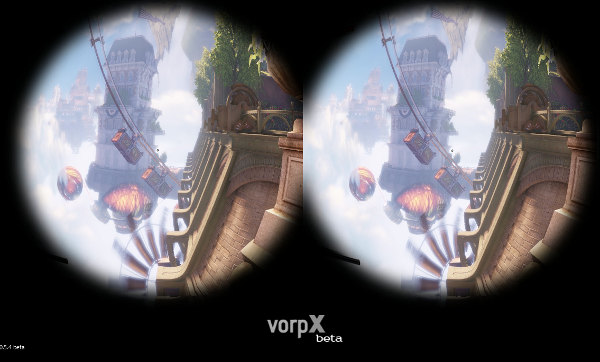In Conclusion and To be Continued …
Remember, VorpX is still in Beta so my time with the VorpX has been parts wonder, rediscovery and occasionally frustration. But I’ve been almost universally impressed by the product’s maturity and Author Ralf Ostertag’s drive for the best User Experience possible. Features like the slick in-Rift menu system and the massively useful ‘Edge Peek’ are there to try to ensure you have to leave your game experience as little as possible in order to tailor your VR experience.
Game compatibility with the default Z-Buffer mode is excellent and the list of officially supported games (currently around 80 with Stereo 3D) is growing with many more not on the list just ‘working’ as I tried them. We’ll try to cover more games in the next article which will also explore VorpX’s extensive menu system in more detail.
Oculus Rift owners should count themselves very lucky indeed. It’s been less than 3 months since Backers started receiving their Dev Kits and already we have a raft of Tech Demos, Concept Games and Full Triple-A titles to play with. 3D Drivers like VorpX and Vireio help plug the gap between the promise of future, dedicated VR titles and classic gaming experiences from the past.
My aim with this article was to temper my views with detailed videos and images so that you can judge for yourselves as to what your opinions on VorpX’s capabilities are. Hopefully I’ve achieved this for the most part. The comments section and forum are open for feedback and questions which I’ll try to answer
Release Date and Price
Ralf is a self-confessed perfectionist and is continually tweaking and refining the product it seems so won’t be drawn on exact release dates, but he confirms that initial introductory pricing for the driver will be around $45 / 35EUR. We also understand that there will indeed be a trial version of the product available, so those wishing to try before they buy can do so.
Thanks to Ralf Ostertag for enduring my endless barrage of questions and to my wife for putting up with me lost in other worlds whilst I put this article together. We’ll be back with a follow-up article based on feedback and questions and we’ll also be covering the open-source and free Vireio drivers very soon.
Feedback can be added as comments to this page or over in a dedicated thread in our forums here.







